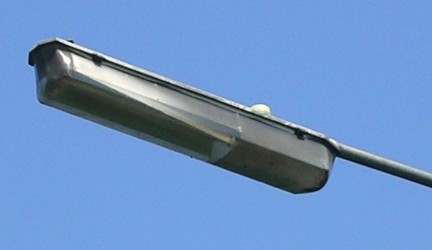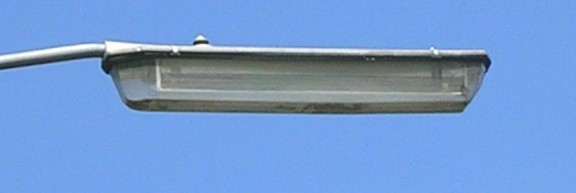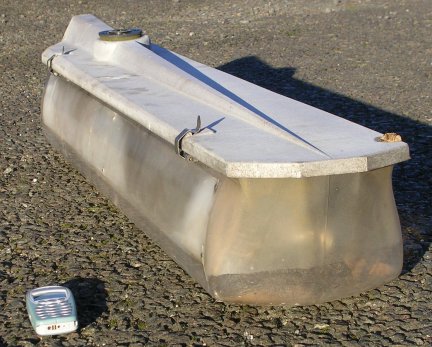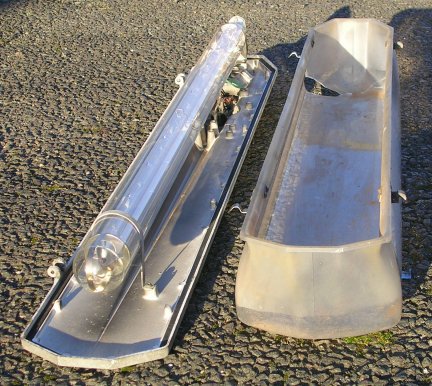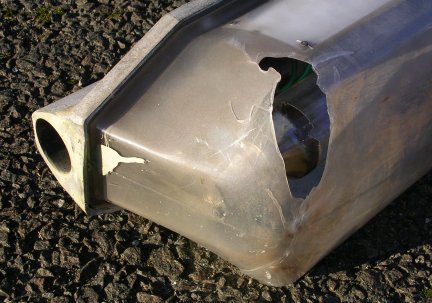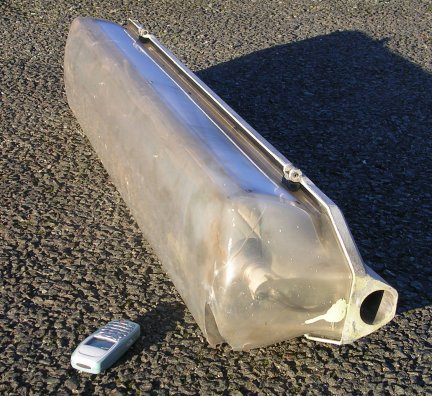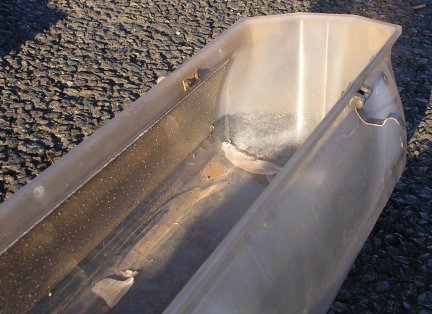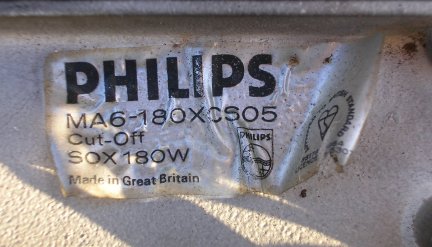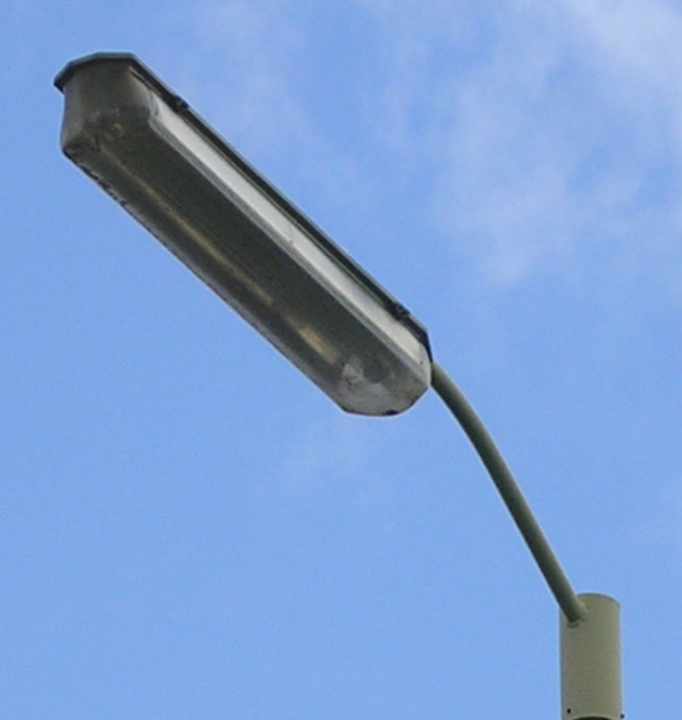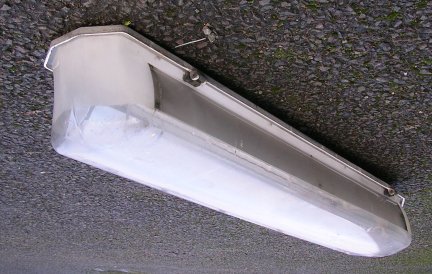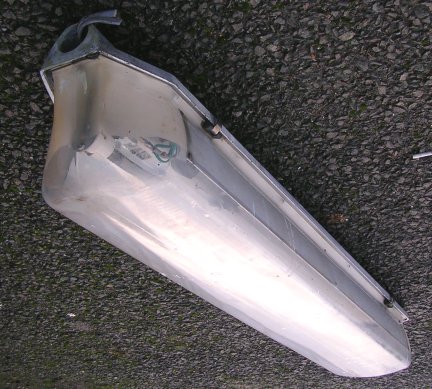Philips MA6-180XC
Article updated 7th December 2006 click here for details
|
Philips MA6-180XC 180w SOX cut-off lantern. Dating from the early 1970's, the MA6C was one of a small range of remote-geared cut-off lanterns offered by Philips for main road lighting. The range was identified as the MA9C for 90/100w SOX lamps, MA5C for 135/150w SOX lamps, and the MA6C for 180/200w SOX lamps. These lanterns were also manufactured by Eleco as their GR101 (90/100w SOX), GR151 (135/150w SOX), and GR201 (180/200w SOX). The canopies and bowls of the GR151 and GR201 lanterns were also used in a modified form to produce the geared Eleco GR102 90w lantern and the GR152 geared135w lantern.
1. GR152 'geared' lantern that utilises the canopy and bowl
of the Philips MA6C/Eleco GR201 The MA6Cís canopy is
identical to the standard MA6/GR200, but it's the bowl that is radically
different, in that the sides of the bowl are flared out, and are fitted with curved
aluminium reflector panels to throw the reflected light from the lamp back down
through the bottom of the bowl and on to the road surface below; allowing little
or no light above the horizontal of the lantern's canopy.
2. The MA6C is a big lantern, as the mobile phone demonstrates. The damage to the rear corner of the bowl can be seen in this view.
3. This is a comparison view of a standard Philips MA6/Eleco GR200 lantern that uses the same canopy as the MA9C.
4. Front view of the lantern illustrating the flared sides to the bowl, with the aluminium reflector panels that provide the cut-off effect.
5.The lantern's bowl is detached in this view, but it gives a good overall view of the lantern's interior and the general shape of the cut-off bowl.
6. The badly holed rear corner of the plastic bowl is sadly irreparable.
7. The large flat bottom to the bowl that is synonymous with these lanterns.
8. In this view we can see one of the two curved aluminium reflector panels that are riveted to the inside of the bowl.
9. The label declaring the lantern to be a Philips MA6-180XCSO5, which I can only assume means: MA6 (main road lantern model 6), 180X (180w SOX), CSO (cut-off sodium), 5 (?).
10. Happier days when the MA6C was undamaged and still in use in Shropshire. 7th December 2006 update: Replacement MA6C 180w lantern acquired
On 17th November 2006 an undamaged replacement Philips MA6C lantern was acquired for the collection. The lantern had been located at the same road junction near to Weston Park in Shropshire as the previous MA6C, but had been especially put aside when it was realised that the first fitting had been accidently broken. My sincere thanks to Maurizio D'Alesio and Ray Bate.
This replacement MA6C is in superb condition and is a fantastic addition to the collection.
Another view showing the MA6C's classic lines.
|
|
|
Copyright(c) 2005 Claire Pendrous. All rights reserved.
Please note that all pictures are by Claire Pendrous, or are part of the Claire Pendrous photographic collection unless otherwise stated; none of these images can be copied without obtaining prior permission.
